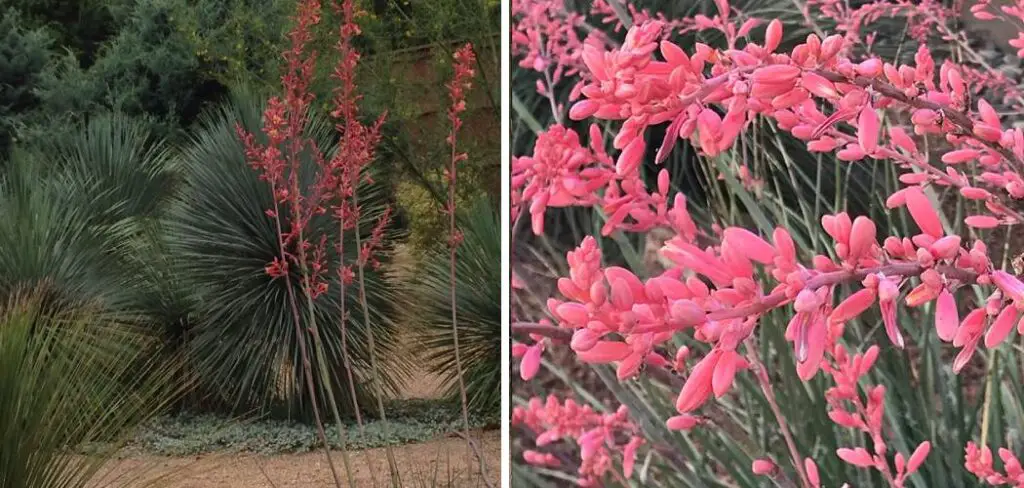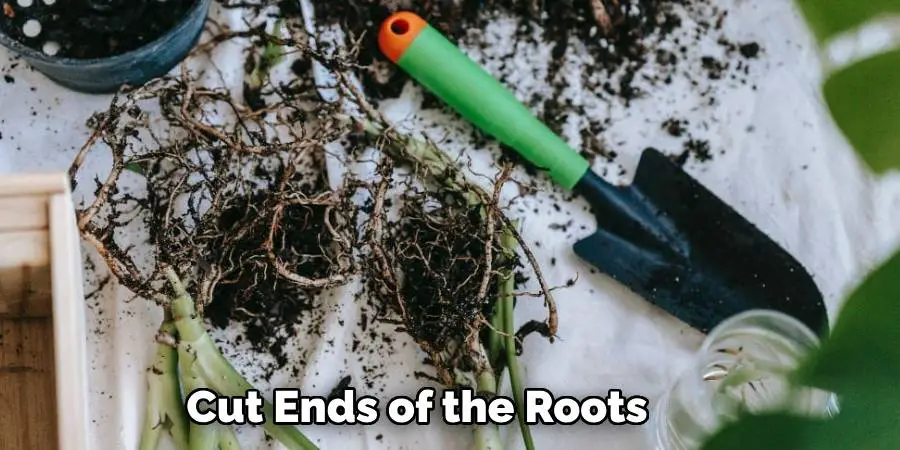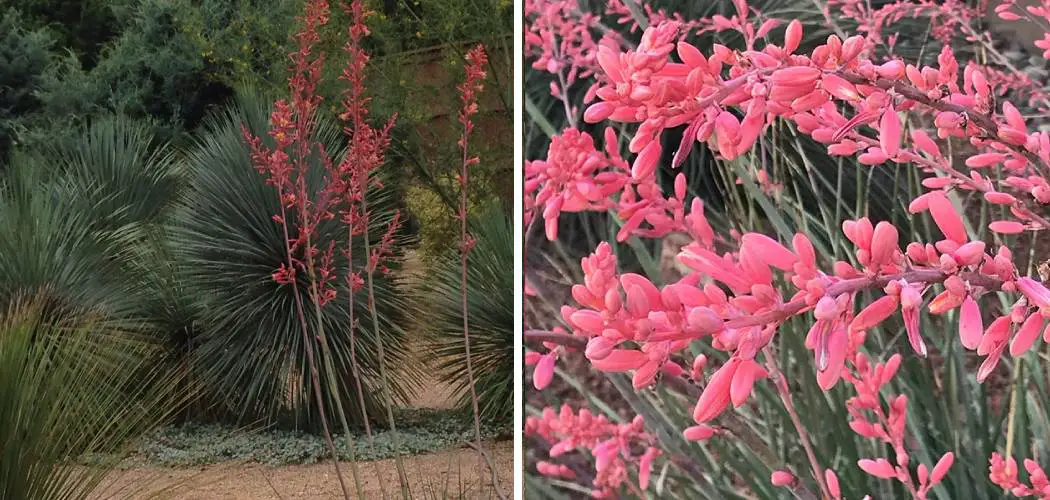Dividing red yucca plants is a rewarding task that can enhance the beauty of your garden and promote healthier growth. In this guide, we’ll walk you through how to divide red yucca plants, preparing your tools, and executing the division process with care.
Whether you’re an experienced gardener or a beginner, our tips and techniques will help you successfully propagate these stunning, drought-tolerant plants, ensuring your landscape flourishes year after year.

Understanding Red Yucca Plants
Red yucca plants, scientifically known as Hesperaloe parviflora, are not true yuccas but share similar characteristics, making them a popular choice in drought-tolerant landscaping. These evergreen perennials thrive in hot, arid conditions and are native to the deserts of Texas and northeastern Mexico. With their long, arching green leaves and vibrant coral-red tubular flowers, red yuccas add striking visual interest to any garden.
They bloom primarily in the summer, attracting pollinators such as hummingbirds and bees. The hardy nature of red yucca plants allows them to withstand harsh weather conditions and poor soil quality, making them a low-maintenance, resilient option for gardeners looking to incorporate both beauty and practicality into their landscapes.
Why and When to Divide Red Yucca Plants
Dividing red yucca plants is essential for maintaining their health, promoting vigorous growth, and enhancing their aesthetic appeal. Over time, red yuccas can become crowded, leading to diminished airflow and increased competition for nutrients and water. By dividing them, you can alleviate overcrowding, encouraging healthier plants with more vibrant blooms. Additionally, division is a cost-effective method to propagate these striking plants, extending their presence throughout your garden or sharing them with fellow gardening enthusiasts.
The best time to divide red yucca plants is in the early spring or late fall. During these periods, the plants are either emerging from dormancy or preparing to enter a period of reduced growth, minimizing stress from the division process.
Dividing in early spring allows the plants to establish themselves before the intense summer heat, while late fall division enables root development during the cooler months. Regardless of the chosen season, it is crucial to avoid dividing red yucca plants during their peak blooming period, as this can interfere with their flower production and overall vitality.
10 Methods How to Divide Red Yucca Plants
1. Selecting the Right Season for Division
Choosing the appropriate time of year is crucial for the successful division of red yucca plants. Ideally, division should be carried out in late winter or early spring when the plant is emerging from dormancy and before the new growth begins in earnest.
During this period, the plant’s energy is focused on root development rather than flowering or seed production, enhancing its ability to recover from the stress of division. Additionally, cooler temperatures and increased moisture in the soil facilitate root establishment, providing the divided plants with the best conditions for rapid growth.
2. Preparing the Tools and Materials
Before starting the division process, it is essential to gather all necessary tools and materials to ensure a smooth and efficient operation. A sharp spade or garden knife is needed to cleanly cut through the root mass, reducing the risk of damaging the plant.
A pair of gardening gloves will protect your hands from the plant’s sharp leaves and potential irritants. Additionally, having disinfectant on hand to sterilize the tools before and after use can prevent the spread of disease. A tarp or large plastic sheet can be useful to lay out the divided sections, keeping them clean and organized.

3. Watering the Plant Before Division
Proper hydration of the red yucca plant is a critical preparatory step before attempting division. Thoroughly watering the plant a day or two prior to division helps to soften the soil and makes it easier to dig out the root system without causing excessive damage.
Well-hydrated roots are less prone to breakage, and the plant is better equipped to handle the stress associated with division. Additionally, moist soil clings to the roots, providing a protective layer that helps retain moisture during the transition period.
4. Digging Up the Red Yucca
Carefully digging up the red yucca plant is a delicate process that requires patience and precision to avoid damaging the roots. Begin by marking a perimeter around the base of the plant, approximately 12-18 inches from the crown, to ensure you capture a substantial portion of the root system. Use a sharp spade to dig around this perimeter, gradually working your way deeper and closer to the roots. It may be necessary to dig a trench around the plant and then undercut it to free the root ball from the soil.

5. Dividing the Root Ball
Dividing the root ball of the red yucca plant is a critical step that determines the success of the propagation process. Begin by examining the root ball for natural division points, which are areas where the roots and stems naturally separate into distinct sections.
Using a sharp garden knife or spade, carefully cut through these points, ensuring each division has a healthy portion of roots and at least one or two stems. If the root ball is particularly dense, you may need to use a saw or pruners to make clean, precise cuts.
6. Inspecting and Treating the Divisions
Once the red yucca plant has been divided, it is essential to inspect each section for any signs of disease or damage. Remove any dead or rotting roots, as these can harbor pathogens that could affect the health of the new plants.
Trim any damaged or excessively long roots to encourage new growth. It is also beneficial to apply a rooting hormone to the cut ends of the roots to stimulate root development and improve the chances of successful establishment. If you notice any pests or fungal infections, treat the affected areas with an appropriate pesticide or fungicide to prevent the spread of disease.

7. Replanting the Divisions
Replanting the divisions is a critical step that requires careful attention to detail to ensure the new plants establish well in their new location. Choose a well-drained site with full sun to partial shade, mimicking the plant’s natural habitat.
Prepare the planting holes before dividing the plant, making them slightly larger than the root balls to allow room for root growth. Place each division in a hole, ensuring the crown is at or slightly above the soil level to prevent rot. Backfill the hole with soil, firming it gently around the roots to eliminate air pockets.
8. Post-Planting Care
Providing proper care after planting is crucial for the establishment and growth of the newly divided red yucca plants. Water the plants regularly, especially during the first few weeks, to ensure the soil remains consistently moist but not waterlogged.
Gradually reduce the frequency of watering as the plants establish their root systems. Applying a balanced, slow-release fertilizer can provide essential nutrients to support new growth. Monitor the plants for signs of stress, such as wilting or discoloration, and adjust care practices as needed.
9. Monitoring Growth and Health
Regularly monitoring the growth and health of the newly divided red yucca plants is essential for ensuring their successful establishment and long-term vitality. Keep an eye on the plants for any signs of stress or decline, such as yellowing leaves, stunted growth, or unusual spots.
These symptoms can indicate issues with water, soil, pests, or diseases. Adjust watering schedules based on weather conditions and soil moisture levels, ensuring the plants receive adequate hydration without becoming waterlogged. Check for pests such as aphids or mealybugs and treat infestations promptly with insecticidal soap or neem oil.
10. Encouraging Flowering and Growth
Encouraging flowering and growth in newly divided red yucca plants requires a combination of proper care and patience. Ensure the plants receive adequate sunlight, as this is essential for flowering. While red yucca is drought-tolerant, providing consistent moisture during the first growing season helps establish strong roots.
Once established, reduce watering to encourage the natural drought resistance of the plant. Fertilize the plants with a balanced, slow-release fertilizer in the spring to provide essential nutrients for growth and flowering. Deadhead spent flowers to promote continuous blooming and prevent the plant from diverting energy into seed production.

Conclusion
Propagating red yucca through division is a rewarding process that can significantly enhance the beauty and resilience of your garden. By following the detailed steps outlined, from preparing the plant for division to monitoring its growth and health, you can ensure successful propagation and robust development of your new plants.
Patience and diligence are key throughout the process, as red yucca plants require time to establish strong root systems and reach their full potential. Hopefully, this article gave you some helpful tips about how to divide red yucca plants successfully, so now that you have the proper knowledge on how to get the job done, why not give it a try today?
About
Outdoor Fixes is a distinguished figure in the world of Diy design, with a decade of expertise creating innovative and sustainable Diy solutions.
His professional focus lies in merging traditional craftsmanship with modern manufacturing techniques,
fostering designs that are both practical and environmentally conscious. As the author of diy,
outdoorfixes delves into the art and science of outdoorfixes-making, inspiring artisans and industry professionals alike.
Education RMIT University
(Melbourne, Australia) Associate Degree in Design (Outdoor Fixes) Focus on sustainable design, industry-driven projects,
and practical craftsmanship. Gained hands-on experience with traditional and digital manufacturing tools, such as CAD and CNC software.
Nottingham Trent University
(United Kingdom) Bachelor’s in outdoorfixes.com and Product Design (Honors) Specialized in product design with a focus on blending creativity with production
techniques. Participated in industry projects, working with companies like John Lewis and Vitsoe to gain real-world insights.
Publications and Impact
In diy, Outdoor Fixes his insights on indoor design processes, materials, and strategies for efficient production.
His writing bridges the gap between artisan knowledge and modern industry needs, making it a must-read for both budding designers and seasoned professionals.

